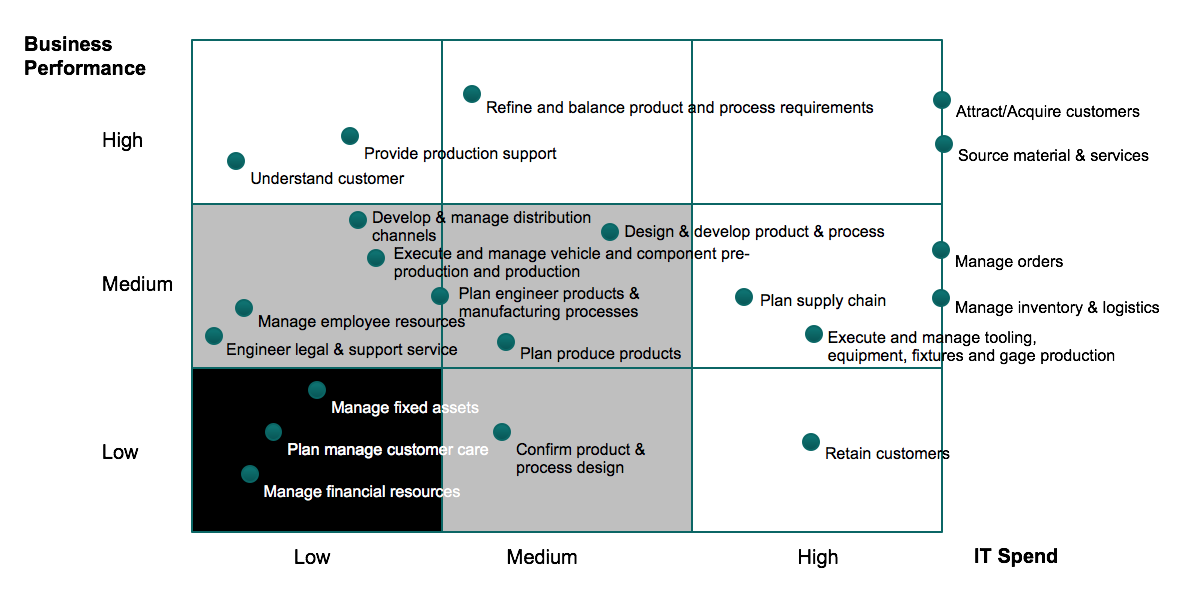Digital business
Automaker Co. was risking disruption of its brick-and-mortar business model and destruction of significant shareholder value. Pressing questions that management needed to answer included the following:
- Which internal processes require immediate attention given the risk of disruption?
- What existing internal processes offer the greatest opportunity to develop new businesses and services to create shareholder value?
- What existing internal processes could be digitized in order to create shareholder value in other industries or across industries?
- What new e-enabled products and services should the Automaker Co. offer in order to create shareholder value?
Given its capabilities, Automaker Co. can extract large value at key points of the value chain for processes and sub-processes that require transformation. The value was estimated at roughly $3,600/vehicle in terms of savings.
Strategic Processes

Opportunistic Processes

Spin-Off Opportunities
In addition, we identified opportunities at undisclosed value to create spin-offs or digital startups:
- Online vehicle sales
- Online parts and accessories sales
- Enterprise customer management
- Enterprise quality data warehouse
- Online design tooling
- Service parts operations
The work involved five large bodies of analysis.
I. Diagnosed the business
We disaggregated the business value chain into processes to provide an overview of where the industry was the active in digitization.
II. Evaluated sub-processes
The concern was to identify which sub-processes of the business merited digitization either to attack or defend against the competition. For each process, we measured business performance versus IT spend to sort out sub-processes with the greatest merit for transformation.
Exhibit 1. Sub-Process Performance Assessment

III. Configured concepts
The central issue was how to close the gap between the old business design and the digital architecture of the future. We configured concepts in the form of electronic maps. This analysis required breaking down physical sub-process maps to the activity level (mini), and identifying activities that could be performed electronically.
IV. Ranked opportunities
The goal was to rank all resulting concepts for strategic impact and financial attractiveness to the firm. We ranked concepts in three categories:
- leverage strengths
- protect weaknesses
- spin offs
V. Re-aggregated the value chain
The final step was to re-aggregate the value chain into an overall architecture that aligned to the strategic business requirements.

